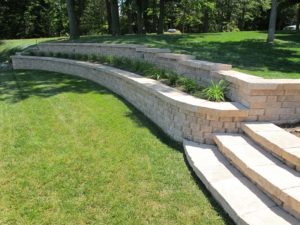The Single Strategy To Use For Hilton Head Landscapes
The Single Strategy To Use For Hilton Head Landscapes
Blog Article
The Single Strategy To Use For Hilton Head Landscapes
Table of ContentsHilton Head Landscapes for BeginnersHilton Head Landscapes - An OverviewThe Ultimate Guide To Hilton Head LandscapesThe Basic Principles Of Hilton Head Landscapes The smart Trick of Hilton Head Landscapes That Nobody is DiscussingHilton Head Landscapes - An OverviewAn Unbiased View of Hilton Head Landscapes
Line develops all types and patterns and can be utilized in a selection of means in the landscape. Line in the landscape is produced by the edge in between two materials, the summary or shape of a form, or a lengthy straight feature. Lines are an effective tool for the designer due to the fact that they can be made use of to produce an unlimited range of shapes and types, and they control movement of the eye and the body.

Lines can have one or more characteristics, such as those explained listed below, yet they usually serve various objectives. Figure 1. Lines in the landscape - landscape design hilton head. The residential or commercial properties of lines determine just how people react to the landscape, both mentally and literally. Straight lines are structural and strong; they create an official personality, are normally associated with an in proportion layout, and lead the eye directly to a centerpiece.
3 Simple Techniques For Hilton Head Landscapes
Rounded lines produce an informal, natural, unwinded character that is connected much more with nature and asymmetrical balance. Curved lines relocate the eye at a slower rate and include enigma to the room by creating hidden sights.
Upright lines in the landscape consist of high, narrow plant product, such as trees, or high frameworks, such as an arbor or a bird residence on a post. Horizontal lines move the eye along the ground plane and can make a room feel larger. Low lines are extra controlled and develop a sensation of remainder or repose.
Some Of Hilton Head Landscapes
Low lines are produced by low yard wall surfaces, walkways, and brief hedges. Lines are utilized to attract types on a strategy. In plan sight, they define plant beds and hardscape areas. Lines are additionally developed by the upright kinds of developed functions and plant material. There are three primary line types that produce kind in the landscape: bedlines, hardscape lines, and plant lines.
Bedlines link plant product to the residence and hardscape due to the fact that the eye follows the line, moving the look through the landscape. Hardscape lines are created by the edge of the hardscape, which marks the developed framework. Line can also be developed by long and narrow materials, such as a fencing or wall surface.
Little Known Questions About Hilton Head Landscapes.
Type is found in both hardscape and plants, and it is normally the leading aesthetic aspect that spatially organizes the landscape and commonly figures out the style of the garden. The form of structures, plant beds, and garden ornaments additionally identifies the total kind theme of the yard. Official, geometric kinds consist of circles, squares, and polygons.
Plants produce kind in the yard via their outlines or silhouettes, but type can also be defined by a void or unfavorable area in between plants - landscaping hilton head sc (https://allmyfaves.com/h1tnhdlndscps?tab=h1tnhdlndscps). Circles can be cycles, or they can be divided into half circles or circle segments and incorporated with lines to create arcs and tangents
Facts About Hilton Head Landscapes Uncovered
Circles can likewise be stretched right into ovals and ellipses for more selection and rate of interest. Circles are a strong style form since the eye is constantly drawn to the facility, which can be used to emphasize a centerpiece or connect other forms. Number 2. Round kinds in hardscape and grass panels.
The square form can likewise be segmented and previously owned consistently to produce a grid pattern. Unlike circles, squares are more powerful on the sides, which can be lined up or overlapped to develop one-of-a-kind patterns and even more intricate forms.
Twisting lines frequently mimic the natural program of rivers or streams and can be called smooth lines with deeply bent wavinesses. Twisting lines (Number 3) function well for pathways, plant bedlines, and dry stream beds. Twisting lines can include interest and secret to a yard by leading viewers around corners to find new sights and areas.
Our Hilton Head Landscapes Diaries

Typical plant forms are well developed and standardized, as form is the most consistent and identifiable characteristic of plants. Kind can also be developed with the massing of plants, where the total mass develops a different type than a specific plant.
A very different kind needs to be used with careone or 2 work well as a centerpiece, yet too many wreak havoc. Natural plant forms, instead of over-trimmed kinds, must develop the bulk of the composition. The significance of overall type is basically based on the seeing perspectivethe type of a tree can show up fairly different to an individual standing under the canopy versus viewing the tree from a range in an open field.
What Does Hilton Head Landscapes Do?
Plant kinds also produce and specify deep space or open rooms between the plants, producing either convex or scooped types in the gaps. High-arching tree branches normally develop a concave open room under the branches, and a round cover with low branches fills the area to develop a convex form in the open area under the tree.

Report this page